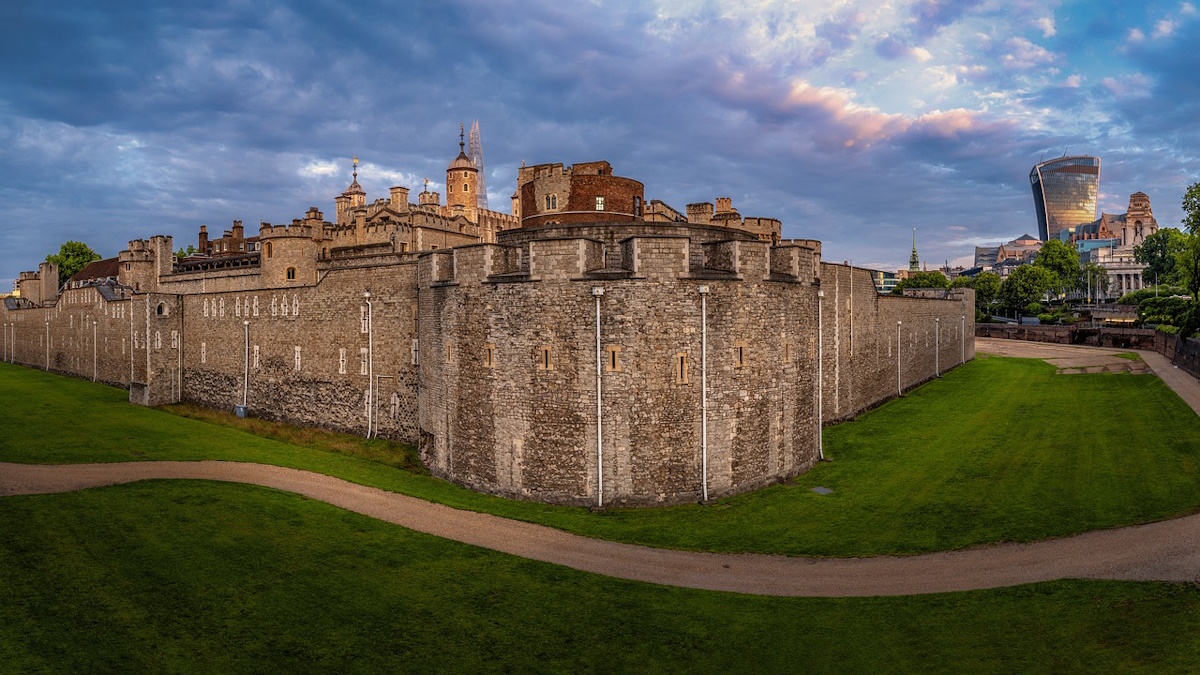The Iconic Fortress on the Thames
The Tower of London, officially Her Majesty's Royal Palace and Fortress of the Tower of London, is a historic castle and fortress located on the north bank of the River Thames in central London. It is one of the city's most famous landmarks and has played a prominent role in English history for nearly a thousand years.

A Brief History
The Tower of London was founded in 1066 as part of the Norman Conquest of England. It was built by William the Conqueror to protect London, assert his power, and provide a safe refuge in times of unrest. Over the centuries, it has served as a royal residence, an armory, a treasury, a menagerie, the home of the Royal Mint, a public record office, and the home of the Crown Jewels of England.
The Tower of London is home to a group of at least six ravens. According to legend, if the ravens ever leave the Tower, both it and the kingdom will fall. To prevent this, the ravens' wings are clipped, and they are cared for by a dedicated Ravenmaster.
Key Features
- The White Tower: The central keep and oldest part of the castle, built by William the Conqueror.
- Crown Jewels: The Tower houses the Crown Jewels, including the Imperial State Crown and Sovereign's Sceptre.
- Yeoman Warders: Also known as "Beefeaters," these ceremonial guardians of the Tower offer guided tours.
- Traitors' Gate: A water-gate entrance to the Tower, through which many prisoners entered.
- Tower Green: The site where high-profile executions took place, including Anne Boleyn and Lady Jane Grey.
Timeline of Key Events
1066
William the Conqueror begins construction of the Tower of London.
1240
Henry III expands the Tower and adds fortifications.
1483
The mysterious disappearance of the "Princes in the Tower" occurs.
1536
Anne Boleyn is executed on Tower Green.
1605
Guy Fawkes is interrogated in the Tower following the Gunpowder Plot.
1941
The Tower suffers damage during the Blitz in World War II.
1988
The Tower of London is designated a UNESCO World Heritage site.
Visiting the Tower of London
Today, the Tower of London is one of the UK's most popular tourist attractions. Visitors can explore the grounds, see the Crown Jewels, learn about the Tower's dark history, and enjoy guided tours led by the Yeoman Warders. The Tower offers a fascinating glimpse into British history and is a must-see for anyone interested in the country's royal heritage.
Plan Your Visit